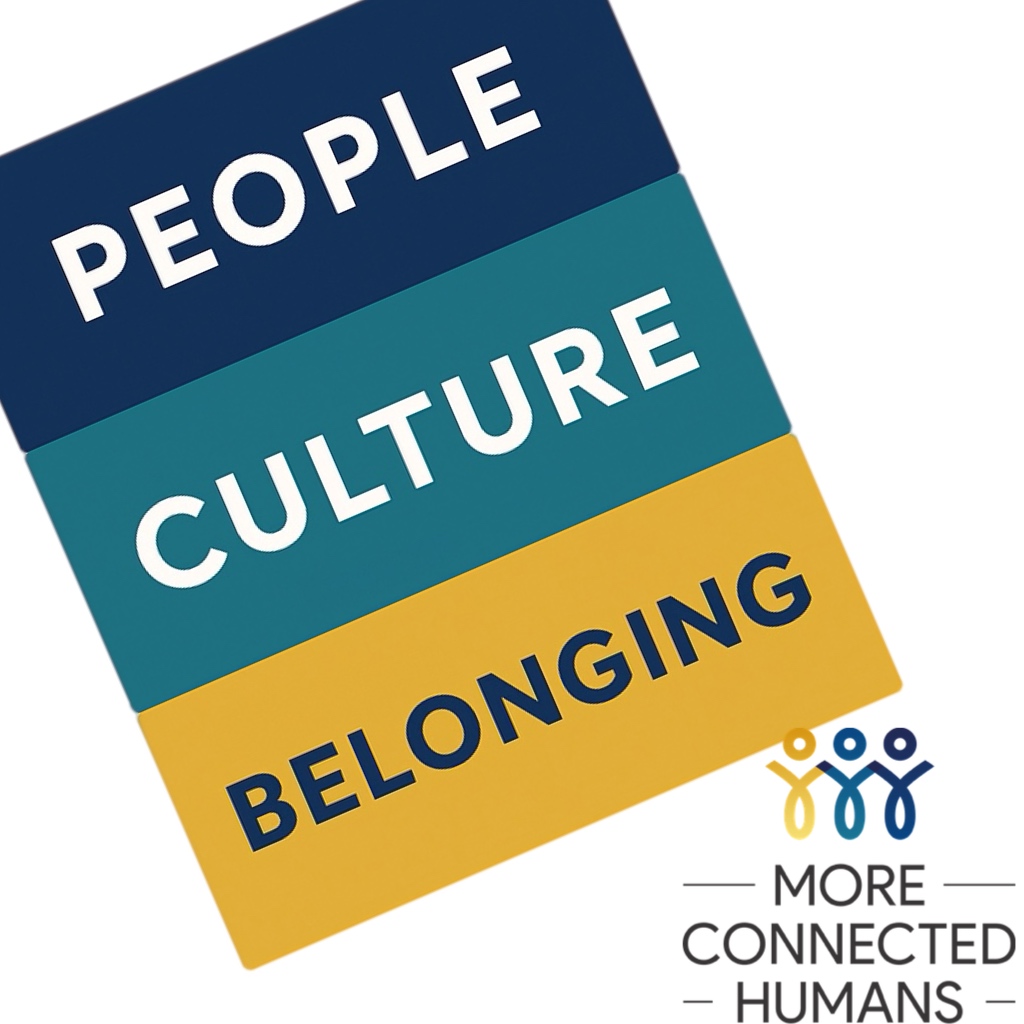Belonging Beyond Buzzwords: Why People & Culture Leaders Need a Framework

“Belonging” is a concept that shows up everywhere in workplaces today. It’s on websites, in culture statements, and in the talking points of leaders who want to inspire. But ask employees how they actually feel, and the answer is uneven. Some feel connected. Others feel left out. Many aren’t sure if the word means anything at all.
And that’s no surprise. A slogan doesn’t create belonging. It’s something people feel—or don’t—when they walk into a meeting, offer an idea, or share a part of themselves. It’s about whether the environment feels safe enough for them to show up fully.
Why belonging matters right now
We’re living in stressful times. The political divide and the tensions we see in government don’t stop at the office door. People carry that stress into work. They show up tired, guarded, or worried about how much they can share.
That’s why belonging isn’t a “nice extra.” It’s what helps people breathe easier at work, build trust with colleagues, and stay committed when pressures outside the workplace feel heavy. Without belonging, teams fray. With it, they become resilient.
What research tells us
Recent work by Kelly Allen and colleagues (2021) reminds us that belonging is not one simple thing. It’s an interaction of:
- Competencies — the skills people bring to connect, communicate, and give feedback (for example: listening deeply, offering feedback without harm, or asking clarifying questions instead of making assumptions).
- Opportunities — the spaces and practices an organization creates for people to come together (such as staff retreats, team huddles, or intentional cross-department projects).
- Motivations — the willingness people have to engage and participate (some colleagues jump in quickly, others hang back until they sense the room is safe).
- Perceptions — the felt experience of safety, value, and acceptance (for instance: whether someone believes their voice will be taken seriously in a meeting, or worries their contribution will be dismissed).
This is an important reminder: belonging isn’t delivered by a policy or an event. It’s co-created every day, through skills, structures, and relationships.
A vignette to make it real
Think of the employee who rarely speaks in meetings. On paper, they’ve got the competencies—they’re thoughtful, capable, and skilled at their job. The organization has the structure—there’s a standing team meeting every week. What’s missing? The perception of safety. They’re scanning the room, wondering if their comment will be ignored or if they’ll be shut down.
Now imagine that same meeting where the leader starts by inviting quieter voices to share, or by acknowledging last week’s contribution from that employee. The structure hasn’t changed, but the experience has. The door to belonging cracks open.
The opportunity for People & Culture leaders
If you’re in a People & Culture role, you already know how complicated this work can be. You may be asked to improve morale, increase retention, and support staff during stressful times—while also handling the traditional HR functions of benefits and compliance.
You don’t need another buzzword. What you need is a framework—a way to connect the dots between culture, structure, and human experience.
Moving forward
Belonging is too important to leave as an aspiration. It needs to be built intentionally, with language, practices, and skills that make it real.That’s the work we’re focused on at More Connected Humans™: helping organizations move from the idea of belonging to the daily practice of it.
If you’d like help, or to exchange ideas, reach out. Check back for the next blog in the series on Belonging.
Eva, MCH
